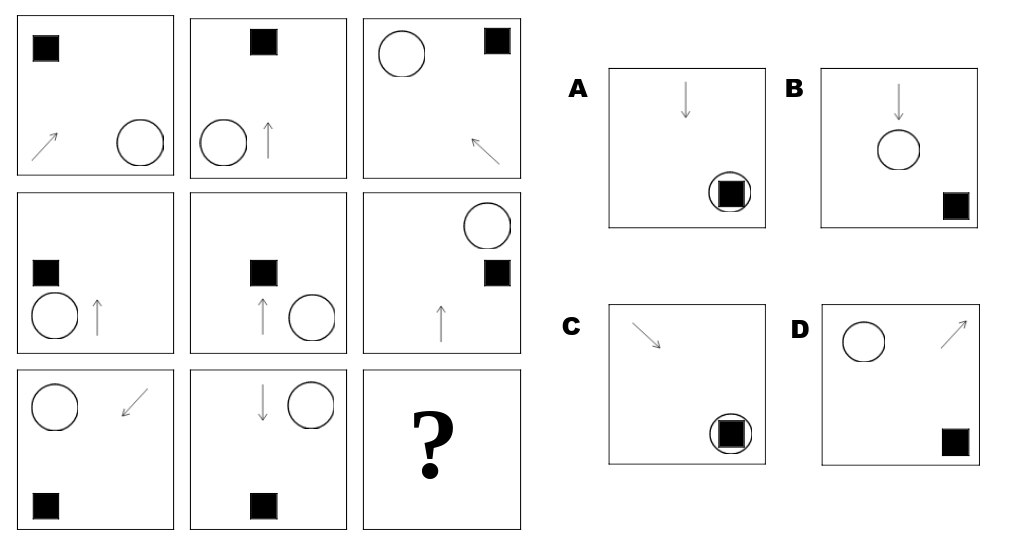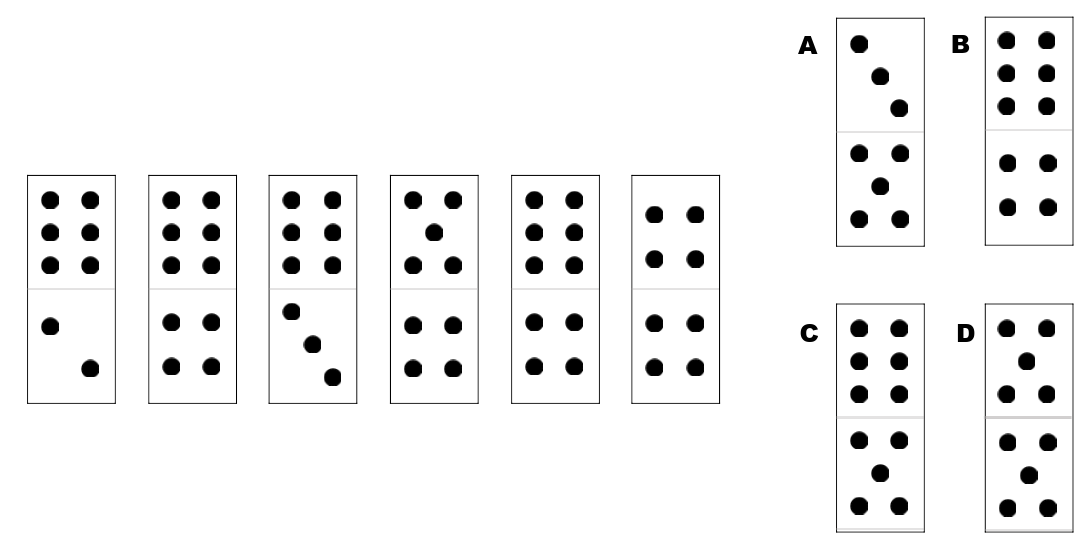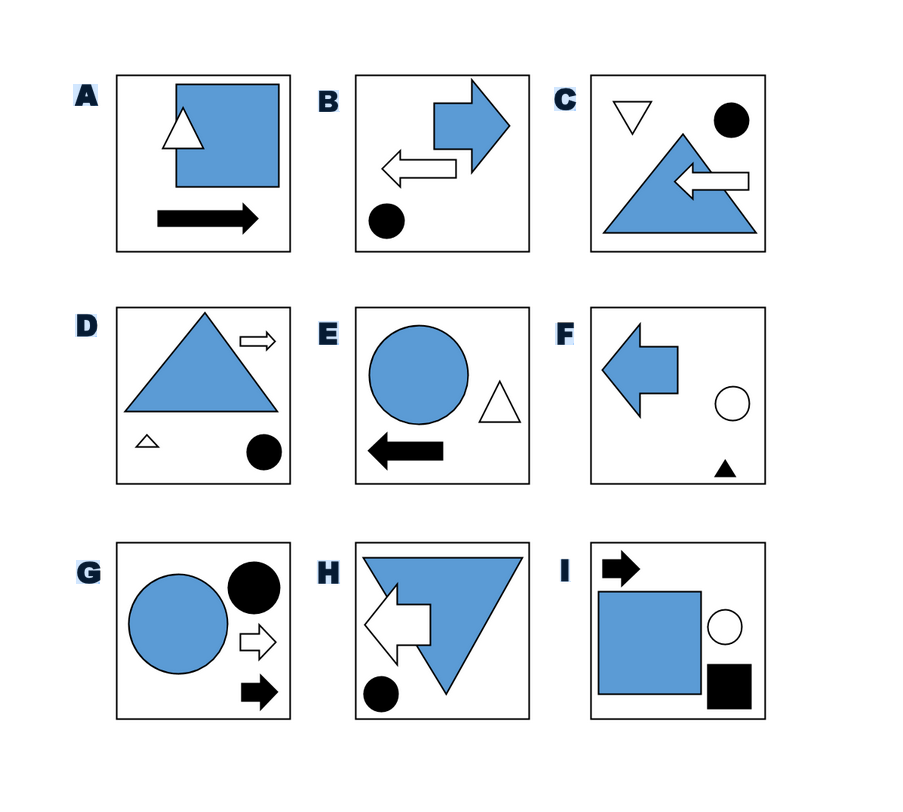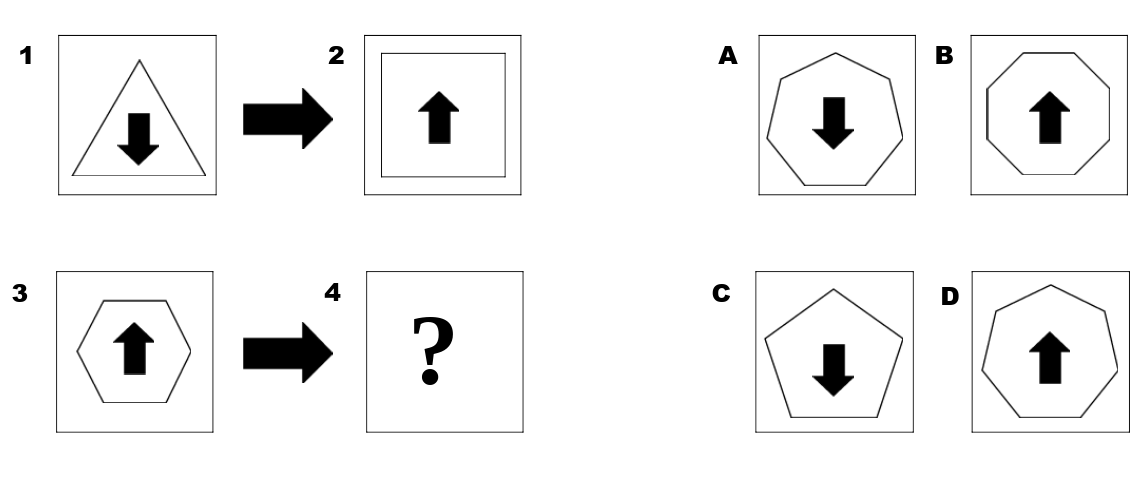Abstract Reasoning Test
Updated 13 March 2021
Abstract Reasoning Test
In this article Skip to section
What Are Abstract Reasoning Tests and Why Are They Used?
The tests of abstract reasoning (also known as tests of inductive reasoning and diagrammatic reasoning) are widely used in the selection process to assess the general intellect of the candidate and the ability to solve new concepts and abstract ideas, rather than test their knowledge prior.
They are closely correlated with IQ tests, and are based on the candidate's ability to recognize underlying logic in a pattern of symbols and shapes (rather than based on words and numbers).
This type of test is very useful for entrepreneurs because the ability to answer abstract reasoning questions is independent of educational experience or cultural background, and can be used to provide an objective indication of intellectual potential.
They are particularly useful for jobs where problem-solving skills and initiative are important, or where candidates have to deal with complex data, or carry out non-routine tasks where initiative is necessary.
That said, abstract reasoning questions could be used by any employer as an evaluation for a position, as they appear to be a good measure of intelligence in general, and test your ability to perceive and solve spatial relationships, without any prior knowledge of language or the maths.
To successfully complete the abstract reasoning tests , you need to think creatively and use lateral thinking (also known as fluid intelligence) to solve new problems. You also need to recognize the relationships between shapes and figures, identify the norms and similarities, and quickly apply these to identify the answer.
---
If you want to practice with abstract reasoning tests and improve your performance, click here .
---
Success in abstract reasoning tests is based on detecting patterns.
What to Expect From Your Abstract Reasoning Test
The abstract reasoning tests are designed to be challenging, in order to differentiate candidates and identify the maximum performance they are capable of performing. They generally have very tight time scales, and questions that increase in difficulty quickly. This means that you will have to identify more rules to solve problems, and the complexity of these rules will likely increase.
Mientras que existen muchas permutaciones sobre los tipos y formatos de las preguntas, hay varios conceptos generales que son comunes, y puede ser útil familiarizarse con ellos.
Tipos de preguntas habituales en los tests de razonamiento abstracto
1ª Pregunta: Identifique el cuadrado oculto
Este tipo de pregunta requiere que te fijes en los patrones de los cuadrados y comprender su relación entre ellos para así, poder identificar el cuadrado oculto.
Hay tres normas en las que fijarse en esta pregunta. Primero, hay una norma de posición relativa: la posición del cuadrado negro corresponde con la posición con la posición que se mantiene dentro del diagrama. Segundo, hay una regla de movimiento, en la que el círculo se mueve alrededor de las cajas en dirección horaria. Y, finalmente, las flechas en la primera y tercera columnas son el reflejo de una en la otra. Por tanto, la respuesta correcta es C.
2ª Pregunta: Complete la secuencia
This requires you to identify and understand the pattern behind the order in which the dominoes are present. There are two patterns. The first, third, and fifth (and therefore the seventh) dominoes have the rule that the number at the top is six and the number at the bottom increases by one successively. The second pattern includes the second, fourth and sixth dominoes, and has the rule according to which the bottom is always four and the number at the top descends by one successively. Therefore, the correct answer is C .
3rd Question: Identify the leftover
This type of question requires you to look at some data, identify the pattern or norms, and then detect which square does not meet these rules. Observe the relative position, the number of items, the relationship between the items, color, shape and orientation of the shapes: There are many different variations in these standards and there could be some external data that complicates the standards.
For example, in this question some of the squares have three items inside and others have four, you will need to figure out if that is important or not. In this particular case, there are two rules. The first is that the largest shape should be gray and the second is that the bottom shape should be black. Therefore, the one that is left over is the C , since the lower shape is striped and not black.
4th Question: 1 is to 2, how 3 is to 4
This type of question focuses on the relationships between the data : being able to recognize what links two boxes together and then apply this rule to a new way to solve the problem.
Here we are presented with two standards. First, the shape in box 2 has one more side than the shape in box 1. Since the shape in box 3 has six sides, the correct shape for box 4 should have seven sides. The second rule is around the arrow, according to which, for shapes with equal number of sides, the arrow points up. For shapes with an odd number of sides, the arrow points down. The correct answer, therefore, is A.
Tips on How to Prepare for Your Abstract Reasoning Test
Abstract reasoning ability is closely correlated with general intelligence. However, familiarity with the types of questions that you are going to encounter and some strategies for solving the questions will really help you perform at your best. Here are our top five tips:
- Many people find that they enjoy the mental challenge of solving abstract reasoning tests ! There are a number of puzzle books and apps that you can use to practice them. Similarly, many practical test editors that you can access like AssessmentDay and JobTestPrep ; It is something that is really worth spending your time on.
- It can be helpful to develop a mental checklist of strategies for solving abstract reasoning questions , such as a list of the different rules that govern data such as size, shapes, number, etc. This gives you a starting point on the questions and can help you work through the test methodically.
- Look at only one rule at a time. There may be extraneous data within the question, which is designed to confuse you. Looking at just one aspect of the question at a time can help you figure out what is important and what is not.
- Manage your time. Sometimes you will be faced with a question where you cannot find the answer. On these occasions, don't spend too much time on it, go ahead and if you have time at the end, go back and review it.
- If you're struggling to find a pattern, clues sometimes appear in the answers . Look for patterns or themes in possible answers; this could help you detect what is most important within the question. For example, if you have a sequence of shapes and all the answers are squares and triangles, then you know that the next shape in the sequence must be either a square or a triangle, and this can help you figure out why.
More Information on Aptitude Tests
You might want to take a look at these articles:
- Numerical reasoning tests . These tests require you to answer questions based on statistics, figures, and graphs.
- Verbal reasoning tests. A means of evaluating your logic and verbal ability to quickly digest the information in a few paragraphs of a text.
- Internal exercises. A business-related situation that assesses how well you are able to prioritize tasks.
- Diagrammatic tests . Tests that measure your logical reasoning, generally under strict conditions of time.
- Test on circumstantial decisions. Psychological tests that evaluate your decision-making capacity when solving problems at work.
- Inductive reasoning test. Tests that identify how well a candidate can detect underlying logic in patterns, rather than words and numbers.
- Non-verbal reasoning tests. A way of testing the candidate's "raw" cognitive ability outside of their language skills.
- Cognitive ability test. A measure of general intelligence, spanning many categories of an aptitude test.
- Mechanical reasoning test. It assesses your ability to apply mechanical and engineering principles to problems; they are normally used for technical positions.
- Watson Glaser tests . Designed to assess the candidate's ability to critically consider arguments and debates; used very often in law firms.
- Spatial awareness tests. These tests assess your ability to mentally manipulate images, and are frequently used in applications for design, engineering, and architectural jobs.
- Bug-checking tests. A rare type of aptitude test that focuses on your ability to identify errors in complex data sets.




